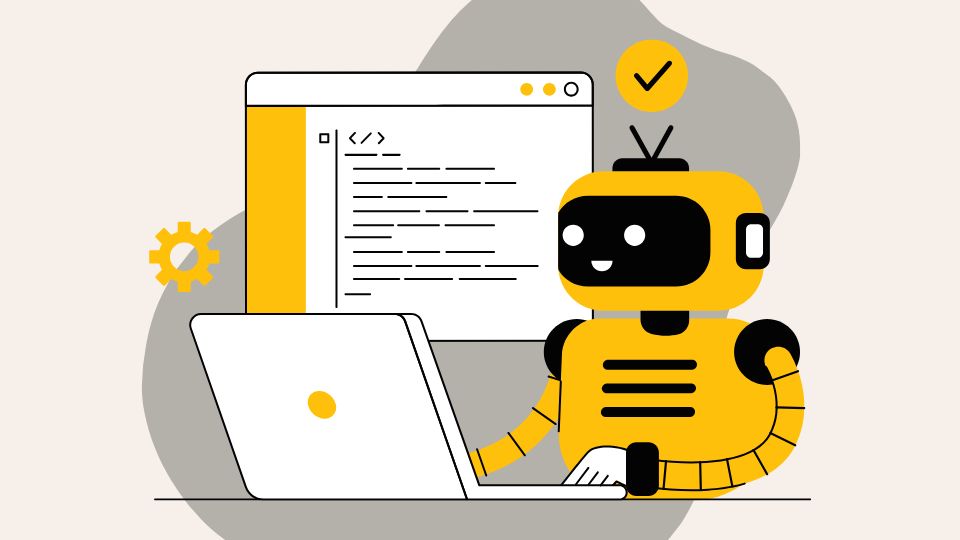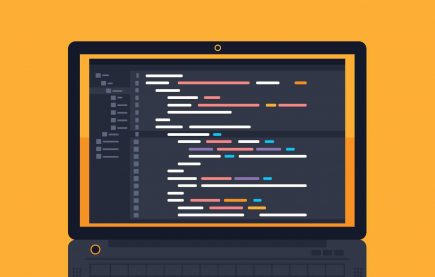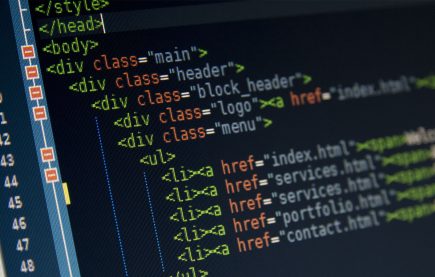
Can Traditional Web Development Survive AI?
Introduction
It is 2025. And we’re close to 2026. You are already 10 steps behind if a potential user/customer comes across a boring, static website when they land on your page.
Now consider the opposite—a user/customer landing on an immersive web page where elements are adaptive, everything is available with a single touch, and the website recommends (or even suggests) actions ahead of time.
The above transition has been powered by AI web development. Whether you are a local startup or a global MNC, visitors expect personalization, clarity, and guidance right in front of them. And this is where AI meets them. It can read not just relevant queries but also intent signals (such as clicks, previous searches, and devices used) to personalize the final look and feel of your website.
So if your stack still treats AI web development as optional, you’re not just slow; you’re practically invisible. But how have we reached this inflection point? This blog will trace the evolution of traditional web development and explore the role of AI in web development. We will also address crucial questions: Will AI replace web developers? If not, then what will be the impact of AI on web development jobs?
The Evolution of Web Development
Web development has never stood still, even from the outset. Every new tech advancement brought significant changes to the layer beneath it and pushed web developers to upskill, prioritize modern architectures, consider the entire user experience, and align with business outcomes.
Here is a sneak peek into the evolution and the emergence of AI website development:
Phase 1: 1995–2005 [Static Pages → Dynamic Web Apps]
This is way before AI web development. Developers were switching to server-side scripting languages (PHP, .NET, and JSP) from hand-coded HTML. Features such as templating, session-based memory management, and enhanced authentication methods were emerging.
Phase 2: 2005–2009 [Web 2.0]
More on-page interactions started seeing the light in traditional web development. Smooth, on-page interactions replaced full page reloads, and new “batteries-included” frameworks made standard features (login, forms, dashboards) quick to build. Smartphones also gained popularity at this time, prompting web developers to design their sites accordingly.
Phase 3: 2009–2015 [Front-End Renaissance]
AJAX (Asynchronous JavaScript and XML) became the hero of traditional web development. It smoothed out messy browser quirks and simplified data exchange across multiple sources, making it easier to ship UI features like parallax, accordions, date pickers, and more.
Phase 4: 2015–2020 [Cloud and DevOps]
Web developers began turning to microservices for faster deployment. They also began incorporating tools for improved observability at this time, including logs, traces, and web performance metrics tracking. Automation testing also gained popularity among developers as a way to streamline debugging and feedback loops.
Phase 5: 2020-2023 [Rule-Based Automation, Off-the-Shelf Solutions]
Low-Code/No-Code web development tools generate boilerplate code, propose refactors, and generate test cases. This was also the phase where headless web development (decoupling back-end and front-end) became a standard practice.
Phase 6: 2023 Onwards
Enters AI web development. Web development copilots generate the entire website within minutes. They are also capable of migrating frameworks and proposing refactors. LLM-powered search & recommendations well as content started shifting the focus to intent-aware UX.
What Exactly Changed with AI in Web Development?
The use of AI in web development has changed three fundamental things:
1. Everything ‘Manual’ Died
Whatever web developers once did manually is now automated through AI website development. From generating web layouts to making front-end UI enhancements, AI can do everything within minutes and even seconds.
2. Traditional Web Roles Have Become Obsolete
This change has made everyone question, “Will AI replace web developers?” While AI hasn’t yet replaced developers, it has undoubtedly changed how they are expected to work.
Hence, the traditional web development vs AI debate isn’t about their survival; it is about their evolution. Junior web developers who once spent months learning syntax can now use AI for web development to prototype faster. A web testing expert who once manually generated test cases can generate several test suites with AI in web development.
3. Perceived Threat to Human Creativity
The use of AI in web development has also led web designers and developers to perceive AI as a replacement for them. However, here is the paradox: while AI-driven website development accelerates execution, it struggles with nuance.
When a developer uses AI for web development to design a landing page within minutes, it may have all the basics, but it’ll likely lack the intuition or brand voice. This is because AI tools still cannot understand context and or make judgment calls while considering user experience trade-offs.
So does AI kill web design jobs? Not entirely. But it does affect what web designers do in the process.
The Impact of AI on Web Development
Let’s see what changes have been brought by the use of AI in web development.
Faster Development with LC/NC Tools + AI
The use of AI web development, when combined with LC/NC tools, enables developers to churn out interactive websites within a few hours (even minutes); something that took a few days with traditional web development. Consequently, more than 70% of all new applications are expected to be released through LC/NC development tools by the end of 2025.
Efficiency Gains with Better Developer Experience (DX)
Developers experience a significant difference when using AI for web development tasks, be it prototyping, UI/UX design, or core development. Many are even able to save 35-40% of their standard coding time, with 20-30% of the savings accruing to refactoring efforts.
Easier Debugging
Besides generating web code, AI website development also helps with the reviewing and debugging process. Before you deploy, AI tools can find potential problems, scan the code of your website (and even code created by AI) for vulnerabilities, and suggest fixes.
Hyper-Personalization Down to Each User

Hyper-personalization is another notable change introduced by the use of AI in web development, particularly at a time when more than 71% of users demand digital experiences that feel entirely their own.
In contrast to conventional methods, AI web development utilizes intent signals, real-time behavioral data, and predictive analytics to tailor the user experience to each individual.
Cost-Effectiveness Across the Entire SDLC: Build, Deploy, and Update
The use of AI in web development offers cost savings throughout the entire SDLC in addition to improved speed and efficiency.
- When using AI in web development, your team spends less time creating basic wireframes and prototypes during the research and ideation stage.
- AI web development tools write a substantial amount of boilerplate code during the build phase, allowing your developers to shift their focus to more complex features.
- During the deployment phase, AI tools are useful for identifying early-stage anomalies, code inconsistencies, and security flaws in software that has been deployed online.
- AI web development tools aid in tracking KPIs and releasing updates during the post-deployment phase. If necessary, they can also work on re-platforming or refactoring code bases.
Can AI and Traditional Web Development Coexist?
Absolutely. The future of web development in the age of AI isn’t about choosing sides; it is about adapting. In fact, that is the only way for web developers to coexist with AI.
Forward-looking organizations are already designing and implementing hybrid workflows that use AI web development for speed, while human developers ensure strategic alignment and make informed judgments.
Consider a typical web development project: a web developer uses AI tools to generate an initial component library from design specifications in hours, rather than weeks. A senior developer then reviews the code, refactors for better performance, ensures accessibility compliance, and aligns it with existing architecture patterns (tasks where the use of AI in web development falls short).
The hybrid web design and development workflow looks like:
- AI web development tools write boilerplate code and repetitive structures.
- Human developers take care of the business logic and handle edge cases.
- AI web developer tools generate initial designs from specifications.
- Senior developers review, refactor for performance, and ensure compliance.
- Humans make the final architectural decisions and strategic trade-offs.
- AI website development tools accelerate iteration cycles.
- Developers allocate saved time to code reviews, mentoring, and solving complex problems.
What Skills Web Developers Need with AI in Website Development?
To survive in the future of web development, especially in the age of AI, web developers must have the following skills:
- Knowledge of AI Web Development: Web developers should learn how to utilize well-known AI website development tools, such as Wix and Hostinger, viewing them as supplements rather than substitutes.
- Prompt Engineering: They must know how to effectively communicate the requirements and make the AI website development tool generate specific, personalized outcomes.
- Code Evaluation Capabilities: As web developers transition into web curators, they must shift their expertise from coding to code auditing and evaluation, identifying gaps in AI-generated code.
- Business-Technical Translation Skills: Web developers must have clarity on why something is to be built, not just how it’s to be done.
- Ability to Know When Not to Rely on AI Web Development Tools: Most importantly, in the future of web development in an AI era, they must know AI’s limits. See when human oversight can’t be compromised and when AI web development tools can be relied upon.
The Future of Web Development in an AI-driven World
Conventional web development simply changed into a forward-thinking field; it didn’t die. AI web development has helped organizations and dev teams move past weeks of generating boilerplate code, days of prototyping, and the like of manually generating test cases.
So, the real question isn’t whether traditional web development has died or will AI replace web developers; it is what happens when we stop competing with AI for web development and start conducting it? And the answer is pretty straightforward—improved efficiency, better targeting, and more production.
The use of AI in web development is non-negotiable. But so is human judgment. The competitive edge will come to those who hire web developers skilled in AI and leverage it mindfully with precaution.



